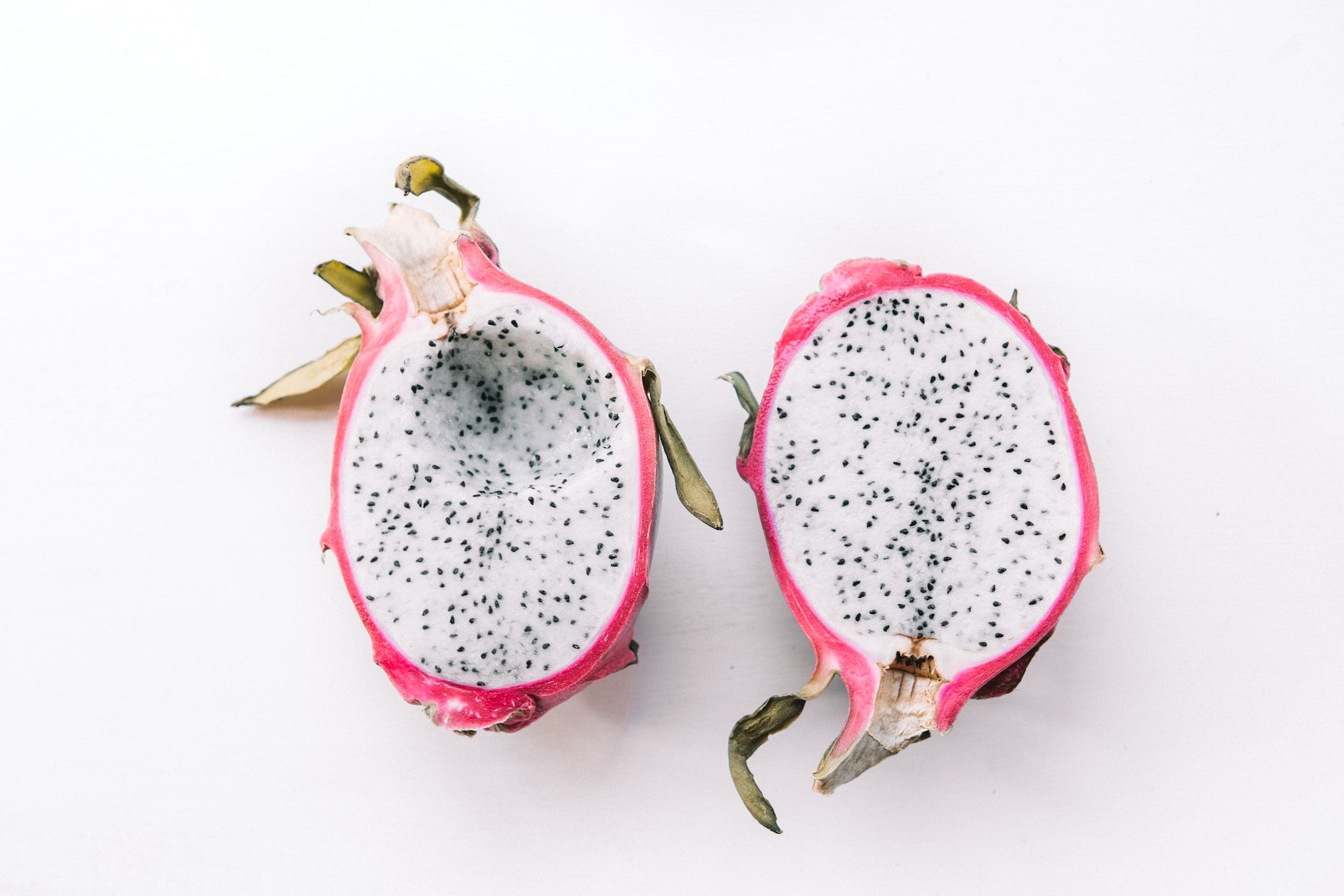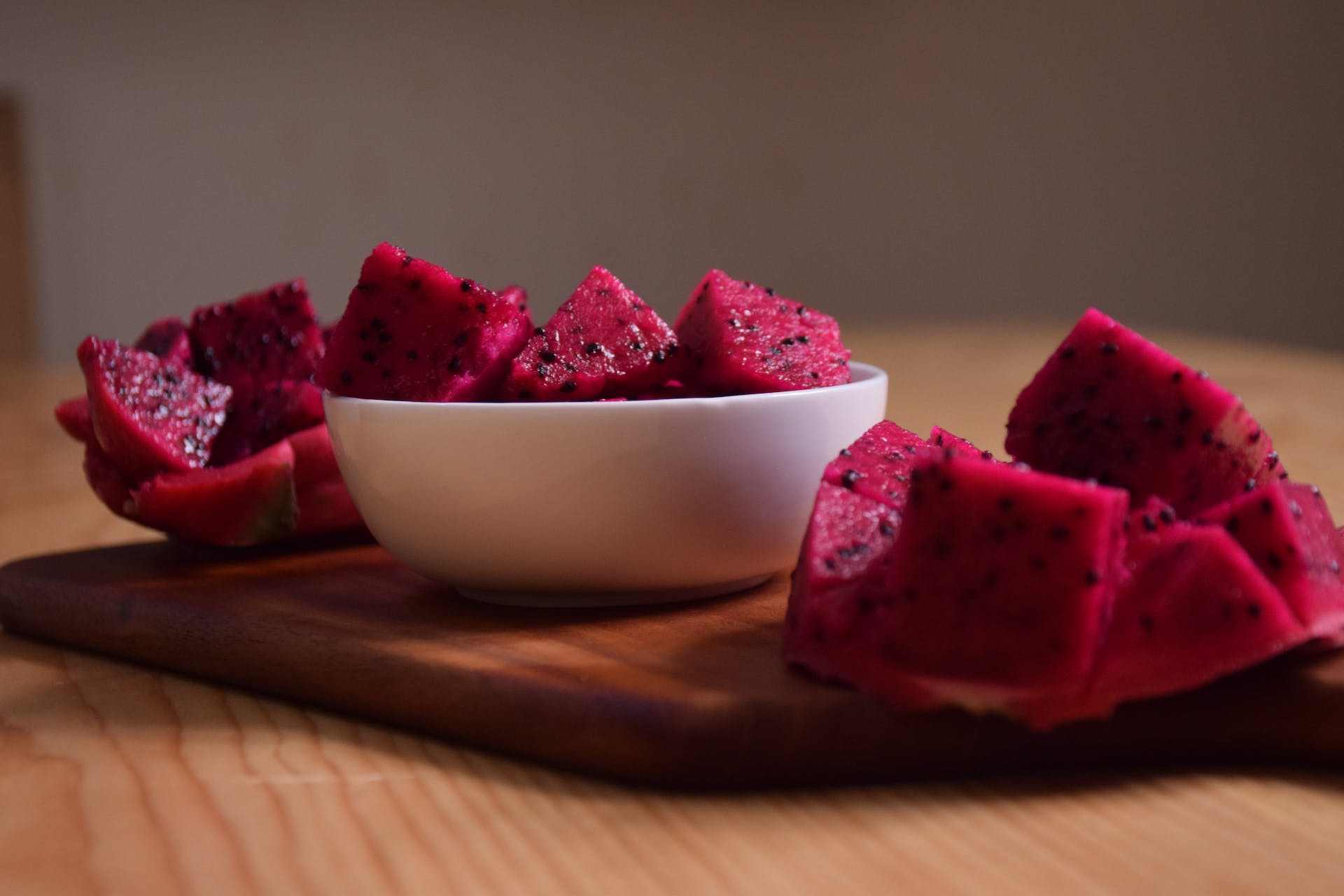
3 mins read
Purple Dragon Fruit: Varieties and Characteristics
Dragon fruit, particularly the varieties that fall into the purple and pink spectrum, presents a unique challenge in categorization. Based on extensive research and observations from various pictures, it's clear that these fruits straddle a fine line between purple and pink hues, making them hard to fit neatly into one category. In my opinion, we can classify dragon fruit as pink when they are lighter and purple/magenta when darker. This could help in better categorization. In this article, we explore the popular purple dragon fruit varieties, their growth process, distinct flavors, and where to find these exotic plants.
1. Condor – Hylocereus guatemalensis
The Condor, a tropical cactus, is known for its deep purple flesh. This cactus shares its origins in Central America and is admired for its sweet and tangy flavor. Growing Condor requires a cutting, as the plant rarely produces viable seeds. The flower of the Condor is as stunning as its fruit, blooming beautifully under the right conditions.
2. Dark Star – H. guatemalensis X H. undatus
The Dark Star is a standout hybrid, born from the combination of Hylocereus guatemalensis and Hylocereus undatus. Dark Star is known for its robust size and intense purple flesh, offering a unique profile that melds sweetness with a subtle earthiness. Apart from its culinary appeal, the Dark Star is a nutritional gem, being a significant source of vitamin C and dietary fiber. Its popularity extends to health enthusiasts who value its potential in aiding digestion and bolstering immune health.
3. Purple Haze – H. guatemalensis X H. undatus
'Purple Haze' is another celebrated hybrid, similar to the Dark Star but with its own unique characteristics. Its vibrant purple interior is not only visually stunning but also bursting with a harmonious blend of sweet and mildly acidic taste. The skin of Purple Haze is less spiky, making it user-friendly in the kitchen. Purple Haze is a favorite in smoothies and fruit salads, not only for its appealing color but also for its refreshing taste. Loaded with vitamins and antioxidants, Purple Haze is an excellent choice for maintaining overall health and vitality.
4. Ohana Express – H. polyrhizus X S. megalanthus
The 'Ohana Express' stands out as a unique hybrid between Hylocereus polyrhizus and Selenicereus megalanthus. Its striking purple flesh is coupled with a taste that beautifully balances sweetness and tartness. The texture of Ohana Express is slightly firmer than other varieties, which makes it ideal for slicing and eating fresh. Rich in antioxidants and B vitamins, Ohana Express is not just a treat for the taste buds but also a boon for health, known for its energy-boosting properties and contribution to heart health.
5. Thomson G2 – Hylocereus guatemalensis
The 'Thomson G2', a pure strain of Hylocereus guatemalensis, is revered for its deep purple flesh and a taste that is both sweet and aromatic. The creamy texture of Thomson G2 has made it a popular choice for desserts, smoothies, and exotic dishes. Rich in phytonutrients, the Thomson G2 is associated with a range of health benefits, including anti-inflammatory properties and the promotion of digestive health.
Where to Buy Purple Dragon Fruit Plants
Purchasing purple dragon fruit plants can be an exciting venture for gardeners and fruit enthusiasts. These plants are available at:
Specialty Nurseries: Many nurseries specializing in exotic or tropical plants stock varieties of dragon fruit plants. It's worth checking local nurseries or those within your region.
Online Retailers: Numerous online retailers offer a wide range of dragon fruit plants, including the varieties mentioned. These platforms provide detailed descriptions and care instructions, making it easier for beginners.
Garden Shows and Expos: Attending local garden shows or expos can be a great way to find dragon fruit plants. These events often feature specialty growers who offer a variety of plants, including rare or hybrid dragon fruits.
Local Farmer's Markets: Some local farmers or small-scale growers sell dragon fruit plants at farmer's markets. This option also allows you to support local agriculture.
When purchasing these plants, it's essential to inquire about their specific care needs, especially if you live in a non-tropical climate. Ensure that the plant is healthy and comes with proper planting and care instructions.
Conclusion
Purple dragon fruit varieties, from the sweet and tangy Condor to the creamy Thomson G2, offer a rich tapestry of flavors. These tropical fruits, growing on cactus-like plants, are typically propagated through cuttings rather than seeds. Each variety shares a unique flavor profile, contributing to the fruit's growing popularity. Whether you're a gardener interested in growing these exotic plants or a food enthusiast eager to explore their distinct flavours, purple dragon fruit is a fascinating and rewarding choice.



